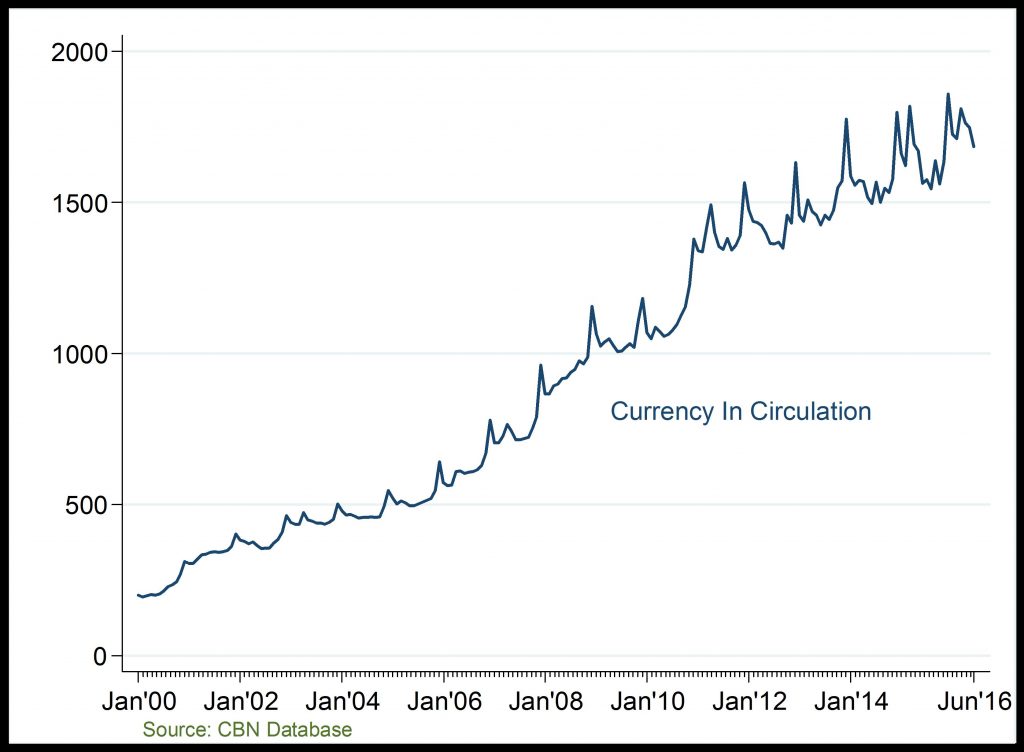Net Domestic Credit And Currency In Circulation (CIC):
Domestic Credit (Billion )
Steadily rising domestic credit

Currency in Circulation (Billion )
Steadily rising money in circulation

Net Domestic Credit: Rising net credit to government and private sector have driven the upward trend in NDC, especially post-2008. In 2016Q1, NDC grew largely on the account of the rise in banking sector credit to the Federal Government, especially through treasury bills and government bonds.
Currency in Circulation (CIC): CIC has mildly fluctuated overtime due to changes in seasonal factors and regular monetary injections/ejection into/out of the economy which leads to changes in CIC vault-cash and currency-outside-banks components. Particularly, the decline in CIC at the end of 2016Q1 is attributed to the decline in the vault cash component of CIC following monetary ejections.
Related
Money Supply: On a month-on-month basis, growth in M2 have accelerated overtime; reaching over N20,000 billion by April 2016. The rise in M2 at the end of 2016Q1 reflects the fast-paced rise in aggre
Monetary Policy Rate: The fluctuations in MPR reflect CBNs intermittent effort to promote growth, stymie inflation or incentivize capital flows. Particularly, the rise in MPR in 2016Q1 was effort to
Public Debt-to-GDP Ratio: The ratio of Nigerias cumulative government debt to national GDP has maintained an upward trend indicating the countrys declining economic productivity and ability to repay
Tax Collected: Tax revenue which has relatively maintained an upward trend, fell considerably in 2015 and dipped significantly in early 2016 on the account of economic downturn, as many businesses sev


